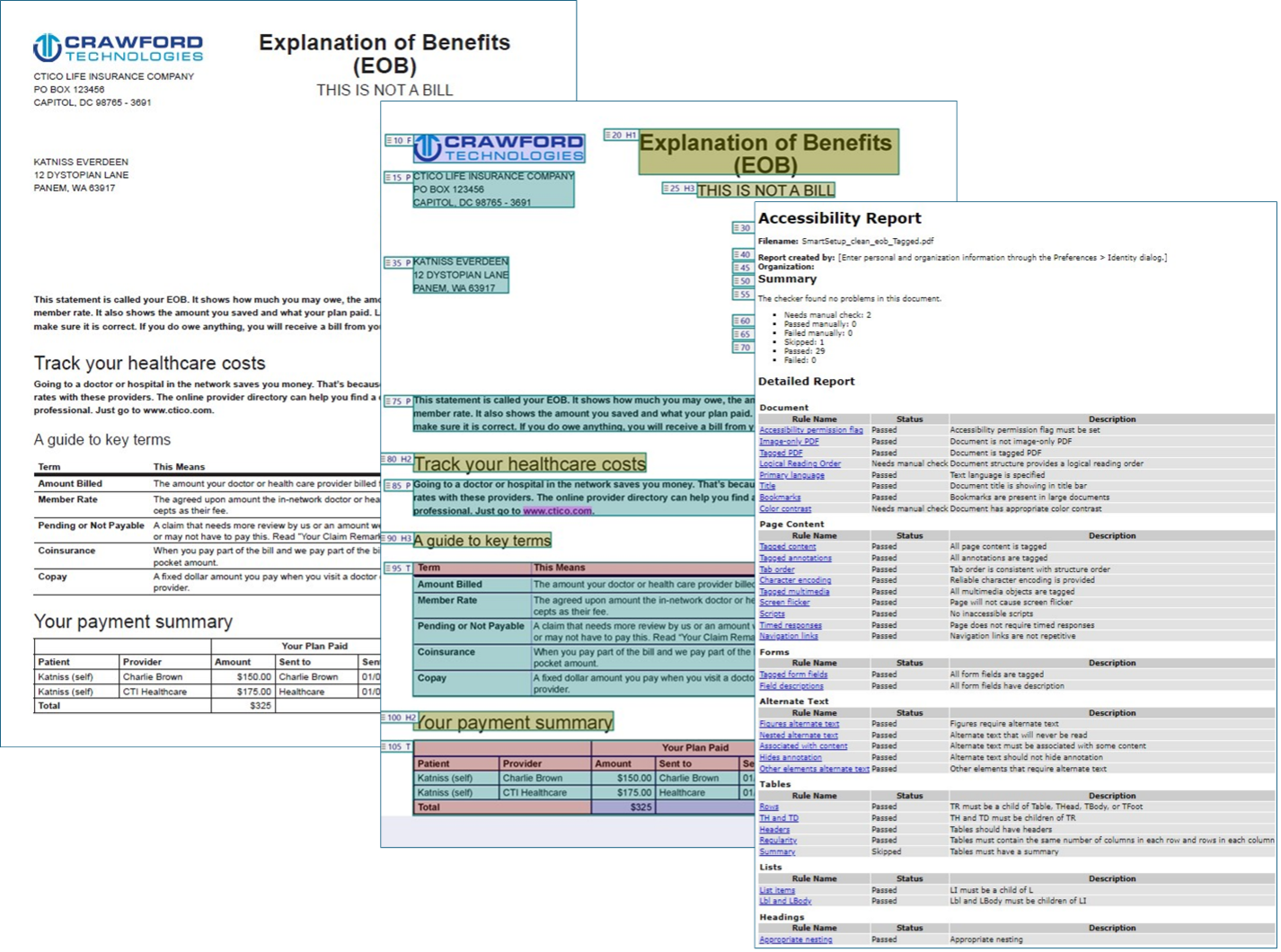
Unlock the Future of Document Management: How AI is Revolutionizing Intelligent Document Processing
Intelligent Information Management (IIM) | Artificial Intelligence (AI) | Intelligent Document Processing
In this blog post, I want to share how AI is having a dramatic impact on intelligent document processing (IDP). I will share three use cases that demonstrate the impact AI is having.
AI is the driving force behind the powerful capabilities of IDP, enabling systems not only to automate, but also continuously improve document onboarding and processing.
- Machine learning: ML is the backbone of AI-powered IDP systems, allowing them to improve accuracy and efficiency over time. These systems "learn" from past document onboarding and processing activities, becoming better at tasks like document classification, data extraction and decision-making. This is especially helpful in high-volume, repetitive tasks like document tagging for accessibility or translating documents into different languages.
- Natural language processing: NLP enables IDP systems to understand and process human language, automating the classification of text-heavy documents. NLP makes it easier for businesses to operate in multilingual environments by accurately processing documents in various languages.
- Cognitive automation: Cognitive automation mimics human decision-making processes, handling more complex tasks such as document classification, data extraction and decision-making without requiring manual intervention. This results in faster processing and improved accuracy, even in dynamic workflows.
Real-world Use Cases of AI-driven IDP
While the benefits of IDP are broad and applicable across industries, let's take a closer look at three specific use cases that highlight its versatility and effectiveness.
Use Case: Print Service Providers (PSP's)
PSPs often face challenges managing high volumes of documents with tight deadlines. Manual document onboarding and processing can lead to inefficiencies, errors and delays, resulting in missed deadlines and unsatisfied customers.
PSPs can automate the entire document onboarding process from data extraction to classification and validation with IDP. The IDP system scans and processes various document formats, including account statements, EOBs and legal notices, ensuring that every document is accurately indexed and prepared for printing.
By automating these labor-intensive tasks, PSPs can significantly reduce manual effort, minimize errors and increase productivity. As a result, they can meet tight deadlines consistently, expand capacity for more clients and improve overall service delivery without hiring additional staff. IDP also helps operators scale their businesses by processing large volumes of documents efficiently and with greater accuracy.
Use Case: Document Accessibility
Organizations increasingly need to make documents accessible for individuals with disabilities, in compliance with regulations like WCAG (Web Content Accessibility Guidelines) and Section 508. Manually converting large volumes of documents into accessible formats such as tagged PDFs or audio is time-consuming and prone to errors.
Using an IDP system, businesses can automate the conversion of documents into accessible formats. The AI-powered system scans and extracts relevant data from various document types, automatically tagging and processing them to meet accessibility standards. Whether converting documents into accessible PDFs, translating them into different languages or adapting them for screen readers, the right software ensures compliance without manual intervention.
With IDP, organizations can drastically reduce the time and resources needed to make documents accessible. Automated processes ensure that every document complies with accessibility standards, improving the experience for individuals with disabilities while reducing operational costs. The ability to manage high volumes of documents efficiently allows organizations to stay ahead in meeting document accessibility requirements.

Image: 1) Adobe PDF Explanation of Benefits statement not tagged; 2) EOB statement auto-tagged for accessibility by an IDP solution; 3) Adobe Accessibility report validating the EOB is correctly tagged for accessibility. Image credit: Crawford Technologies
Use Case: Healthcare Payers
Healthcare payers, such as insurance companies, manage vast volumes of transactional documents, including explanations of benefits (EOBs), claims and statements. Ensuring data is processed securely and accurately, in the correct language, while adhering to strict regulatory standards is a complex and time-sensitive task. Manual processes increase the risk of errors, delayed processing and compliance issues.
By implementing IDP, healthcare payers can automate the onboarding of documents, utilizing AI to extract critical data and validate it against existing databases. The system automatically classifies and indexes documents, ensuring accuracy and speeding up the processing of documents. IDP systems can also flag anomalies, reducing the risk of costly errors.
Healthcare payers benefit from faster document processing, reduced operational costs and improved accuracy. The ability to manage large volumes of varied documents and languages efficiently means healthcare payers can improve customer satisfaction. IDP systems also enable them to scale their document onboarding and processing operations without increasing administrative overhead.
The Future of AI in IDP
AI’s future in IDP promises significant advancements that will revolutionize document onboarding and processing across industries.
Technologies like deep learning and enhanced NLP will enable IDP systems to understand the context and intent behind documents. They will move document onboarding and processing beyond basic data classification, extraction and validation to a more sophisticated interpretation of complex and unstructured information. Enhanced NLP capabilities will improve multilingual document processing, sentiment analysis and context recognition, making document processing more efficient and accurate globally.
ML models will also grow more sophisticated, enabling IDP systems to adapt and improve continuously. Future IDP systems will use adaptive learning to refine document classification, accessibility, translation, error detection and decision-making processes. This evolution will allow businesses to automate increasingly complex tasks, reduce operational bottlenecks and optimize document-centric workflows across sectors such as healthcare, finance and insurance. The integration of cognitive automation will further enhance the system’s ability to manage dynamic tasks, such as compliance with regulatory requirements.
About Ernie Crawford
A digital document industry pioneer, Ernie Crawford is President/CEO and founder of Crawford Technologies. One of only a small number of people worldwide with M-EDP (Master Electronic Document Professional) designation, Ernie has more than 30 years of senior marketing and management experience in the high-volume digital printing market.

